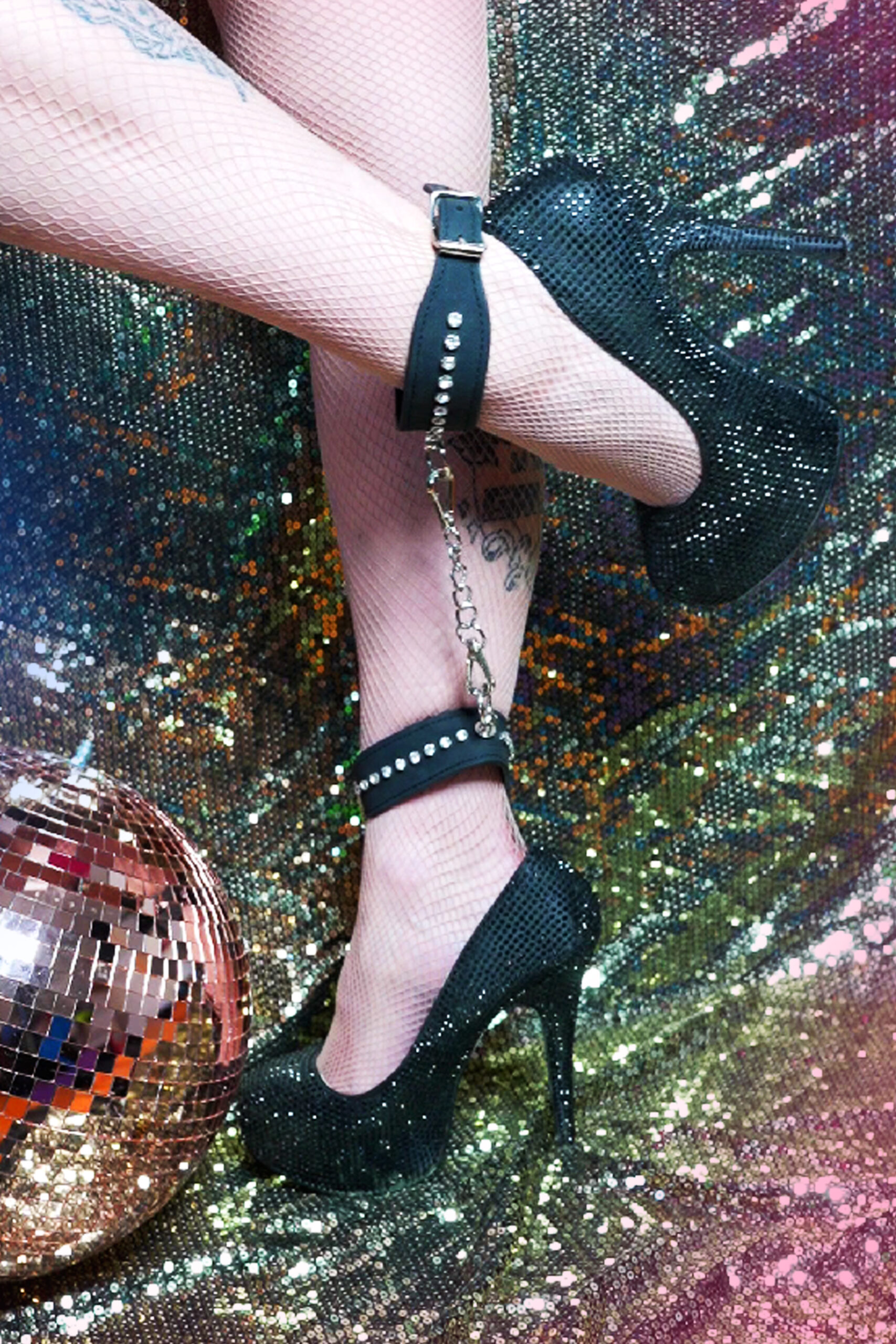Defining Queerplatonic Relationships

Queerplatonic relationships are a fascinating and increasingly recognized aspect of human connection. These relationships offer a distinct form of intimacy and commitment that falls outside the traditional boundaries of romantic and sexual partnerships.
Characteristics of Queerplatonic Relationships
Queerplatonic relationships are a fascinating and increasingly recognized aspect of human connection. These relationships offer a distinct form of intimacy and commitment that falls outside the traditional boundaries of romantic and sexual partnerships. They provide individuals with an alternative way to experience deep emotional bonds and companionship without the expectation or requirement of romantic or sexual involvement.
Defining exactly what constitutes a queerplatonic relationship can be subjective, as individuals may experience and express these connections in diverse ways. However, some common characteristics often associated with queerplatonic relationships include:
- Intense emotional intimacy and connection
- A sense of deep trust and vulnerability
- Shared values, interests, and goals
- Mutual respect and support
- Commitment to the relationship, often expressed through rituals or agreements
Distinguishing Queerplatonic from Other Relationship Types
Distinguishing queerplatonic relationships from other relationship types can be nuanced. While they share elements with friendships and romantic relationships, there are key differences.
Queerplatonic relationships go beyond the typical dynamics of friendship, characterized by a deeper emotional intimacy and commitment that surpasses casual companionship. They also diverge from romantic relationships by lacking the expectation or necessity of sexual or romantic involvement.
Sometimes, queerplatonic relationships may be mistaken for close friendships or even “situationships.” However, the defining factor is the conscious choice to establish a relationship with defined boundaries and expectations, emphasizing emotional intimacy and commitment akin to that found in romantic partnerships, but without the romantic or sexual element.
History and Evolution of the Term “Queerplatonic”
The term “queerplatonic” emerged as a way to describe relationships that fall outside the traditional categories of romantic and sexual partnerships. Coined within online queer communities in the early 2010s, it reflects a growing recognition of the diverse ways people connect and form intimate bonds.
Origins and Early Usage
The term “queerplatonic” emerged from online queer communities in the early 2010s as a way to describe relationships that defied traditional labels. It provided a vocabulary for individuals who experienced deep emotional intimacy and commitment without romantic or sexual involvement, offering an alternative to the binary of romantic and non-romantic relationships.
Before “queerplatonic,” people may have described these relationships using terms like “close friendship” or “soulmate,” but these labels often lacked the specificity needed to capture the unique dynamics of these connections. The emergence of “queerplatonic” marked a significant step in recognizing and validating diverse relationship experiences.
Contemporary Understanding and Acceptance
The term “queerplatonic” gained traction within online queer communities as a way to articulate relationships that existed outside of traditional romantic and sexual paradigms. It provided a specific label for those experiencing deep emotional intimacy and commitment without romantic or sexual expectations, challenging the binary categorization of relationships.
Today, “queerplatonic” is increasingly understood and accepted as a valid relationship type. Its growing visibility reflects a broader cultural shift towards recognizing and embracing the diversity of human connection.
Mainstream media and popular culture are starting to incorporate queerplatonic relationships into their narratives, further normalizing these experiences.
The ongoing evolution of language surrounding relationships is crucial for creating a more inclusive and understanding society. The acceptance of “queerplatonic” is a testament to the power of language in shaping our perceptions and validating diverse relationship models.
Exploring Different Expressions of Queerplatonic Relationships
Queerplatonic relationships are a fascinating and increasingly recognized aspect of human connection. These relationships offer a distinct form of intimacy and commitment that falls outside the traditional boundaries of romantic and sexual partnerships. They provide individuals with an alternative way to experience deep emotional bonds and companionship without the expectation or requirement of romantic or sexual involvement.
Types of Queerplatonic Bonds
Queerplatonic relationships are a fascinating and increasingly recognized aspect of human connection. These relationships offer a distinct form of intimacy and commitment that falls outside the traditional boundaries of romantic and sexual partnerships. They provide individuals with an alternative way to experience deep emotional bonds and companionship without the expectation or requirement of romantic or sexual involvement.
Defining exactly what constitutes a queerplatonic relationship can be subjective, as individuals may experience and express these connections in diverse ways. However, some common characteristics often associated with queerplatonic relationships include:
- Intense emotional intimacy and connection
- A sense of deep trust and vulnerability
- Shared values, interests, and goals
- Mutual respect and support
- Commitment to the relationship, often expressed through rituals or agreements
Distinguishing queerplatonic relationships from other relationship types can be nuanced. While they share elements with friendships and romantic relationships, there are key differences.
Queerplatonic relationships go beyond the typical dynamics of friendship, characterized by a deeper emotional intimacy and commitment that surpasses casual companionship. They also diverge from romantic relationships by lacking the expectation or necessity of sexual or romantic involvement.
Sometimes, queerplatonic relationships may be mistaken for close friendships or even “situationships.” However, the defining factor is the conscious choice to establish a relationship with defined boundaries and expectations, emphasizing emotional intimacy and commitment akin to that found in romantic partnerships, but without the romantic or sexual element.
The term “queerplatonic” emerged as a way to describe relationships that fall outside the traditional categories of romantic and sexual partnerships. Coined within online queer communities in the early 2010s, it reflects a growing recognition of the diverse ways people connect and form intimate bonds.
The term “queerplatonic” emerged from online queer communities in the early 2010s as a way to describe relationships that defied traditional labels. It provided a vocabulary for individuals who experienced deep emotional intimacy and commitment without romantic or sexual involvement, offering an alternative to the binary of romantic and non-romantic relationships.

Before “queerplatonic,” people may have described these relationships using terms like “close friendship” or “soulmate,” but these labels often lacked the specificity needed to capture the unique dynamics of these connections. The emergence of “queerplatonic” marked a significant step in recognizing and validating diverse relationship experiences.
The term “queerplatonic” gained traction within online queer communities as a way to articulate relationships that existed outside of traditional romantic and sexual paradigms. It provided a specific label for those experiencing deep emotional intimacy and commitment without romantic or sexual expectations, challenging the binary categorization of relationships.
Today, “queerplatonic” is increasingly understood and accepted as a valid relationship type. Its growing visibility reflects a broader cultural shift towards recognizing and embracing the diversity of human connection.
Mainstream media and popular culture are starting to incorporate queerplatonic relationships into their narratives, further normalizing these experiences.
The ongoing evolution of language surrounding relationships is crucial for creating a more inclusive and understanding society. The acceptance of “queerplatonic” is a testament to the power of language in shaping our perceptions and validating diverse relationship models.
Navigating Boundaries and Expectations
Queerplatonic relationships offer a unique space for connection, characterized by intense emotional intimacy and commitment without the expectation of romantic or sexual involvement. Understanding these relationships requires recognizing their distinct dynamics, which can sometimes be confused with friendships or “situationships.”
A key aspect of defining queerplatonic relationships is acknowledging the conscious choice involved. Individuals engaging in these connections deliberately establish boundaries and expectations that prioritize emotional intimacy and commitment akin to romantic partnerships but without the romantic or sexual element.
Navigating boundaries within queerplatonic relationships is essential for ensuring mutual respect, understanding, and satisfaction. Open communication about needs, desires, and comfort levels is crucial. It’s important to discuss what each individual considers acceptable within the relationship, addressing areas such as physical touch, emotional support, and time commitment.
Just as in any relationship, consent and respect are paramount. Both parties should feel comfortable expressing their boundaries and have those boundaries respected.
Queerplatonic relationships can enrich lives by offering a space for profound connection and support without the pressures associated with romantic or sexual expectations.
Challenges and Stigma Faced by Queerplatonic Individuals
While queerplatonic relationships offer a fulfilling alternative to traditional relationship models, they also face unique challenges and stigma. These individuals often encounter misunderstanding from those who are unfamiliar with the concept, leading to judgment and assumptions about their motivations and intentions.
Societal Misunderstandings and Biases
One of the primary challenges faced by queerplatonic individuals is societal misunderstanding. Many people lack familiarity with the term “queerplatonic” and struggle to comprehend the nature of these relationships. This lack of understanding can lead to assumptions that queerplatonic relationships are simply close friendships or disguised romantic partnerships.
- Mislabeling and Invalidation: Queerplatonic relationships are often mislabeled as “just friends” or “situationships,” dismissing their significance and emotional depth. This invalidation can make it difficult for individuals to feel comfortable openly discussing their relationships.
- Pressure to Conform: Societal norms often prioritize romantic relationships, putting pressure on individuals to conform to these expectations. Queerplatonic individuals may face judgment or questioning from family, friends, or society at large for choosing a relationship model that deviates from the norm.
- Assumptions about Sexuality: Because queerplatonic relationships are outside the traditional romantic framework, they can sometimes be perceived as indicative of sexual ambiguity or fluidity. This assumption can lead to unwanted probing or pressure to define one’s sexuality within heteronormative boundaries.
Beyond societal misunderstandings, queerplatonic individuals may also experience stigma within their own communities.
- Internalized Homophobia/Biphobia: Individuals who identify as part of the LGBTQ+ community might internalize societal prejudices against non-heteronormative relationships. This can lead to self-doubt or feelings of shame about engaging in queerplatonic relationships, even if those individuals identify as asexual, aromantic, or otherwise outside the traditional romantic spectrum.
- Exclusion from Queer Spaces: Some LGBTQ+ spaces may prioritize romantic and sexual relationships, inadvertently excluding those who choose a different path. This can create a sense of isolation or marginalization for queerplatonic individuals within their own communities.
It’s crucial to create inclusive and supportive environments that recognize the validity of queerplatonic relationships. Open conversations about diverse relationship models, education about the term “queerplatonic,” and challenging societal norms can contribute to fostering greater understanding and acceptance.
Coming Out and Disclosure within Queerplatonic Communities
Queerplatonic relationships offer a unique space for connection, characterized by intense emotional intimacy and commitment without the expectation of romantic or sexual involvement. Understanding these relationships requires recognizing their distinct dynamics, which can sometimes be confused with friendships or “situationships.”
A key aspect of defining queerplatonic relationships is acknowledging the conscious choice involved. Individuals engaging in these connections deliberately establish boundaries and expectations that prioritize emotional intimacy and commitment akin to romantic partnerships but without the romantic or sexual element.
Navigating boundaries within queerplatonic relationships is essential for ensuring mutual respect, understanding, and satisfaction. Open communication about needs, desires, and comfort levels is crucial. It’s important to discuss what each individual considers acceptable within the relationship, addressing areas such as physical touch, emotional support, and time commitment.
Just as in any relationship, consent and respect are paramount. Both parties should feel comfortable expressing their boundaries and have those boundaries respected.
Queerplatonic relationships can enrich lives by offering a space for profound connection and support without the pressures associated with romantic or sexual expectations.
While queerplatonic relationships offer a fulfilling alternative to traditional relationship models, they also face unique challenges and stigma. These individuals often encounter misunderstanding from those who are unfamiliar with the concept, leading to judgment and assumptions about their motivations and intentions.
One of the primary challenges faced by queerplatonic individuals is societal misunderstanding. Many people lack familiarity with the term “queerplatonic” and struggle to comprehend the nature of these relationships. This lack of understanding can lead to assumptions that queerplatonic relationships are simply close friendships or disguised romantic partnerships.
- Mislabeling and Invalidation: Queerplatonic relationships are often mislabeled as “just friends” or “situationships,” dismissing their significance and emotional depth. This invalidation can make it difficult for individuals to feel comfortable openly discussing their relationships.
- Pressure to Conform: Societal norms often prioritize romantic relationships, putting pressure on individuals to conform to these expectations. Queerplatonic individuals may face judgment or questioning from family, friends, or society at large for choosing a relationship model that deviates from the norm.
- Assumptions about Sexuality: Because queerplatonic relationships are outside the traditional romantic framework, they can sometimes be perceived as indicative of sexual ambiguity or fluidity. This assumption can lead to unwanted probing or pressure to define one’s sexuality within heteronormative boundaries.
Beyond societal misunderstandings, queerplatonic individuals may also experience stigma within their own communities.
- Internalized Homophobia/Biphobia: Individuals who identify as part of the LGBTQ+ community might internalize societal prejudices against non-heteronormative relationships. This can lead to self-doubt or feelings of shame about engaging in queerplatonic relationships, even if those individuals identify as asexual, aromantic, or otherwise outside the traditional romantic spectrum.
- Exclusion from Queer Spaces: Some LGBTQ+ spaces may prioritize romantic and sexual relationships, inadvertently excluding those who choose a different path. This can create a sense of isolation or marginalization for queerplatonic individuals within their own communities.
Coming out as queerplatonic can be a deeply personal experience, influenced by various factors such as individual comfort levels, the perceived support systems, and societal expectations.
For some individuals, coming out may involve sharing their relationship status with close friends and family, explaining the nature of their bond and addressing any misconceptions they might have.
Others may choose to disclose their queerplatonic identity more selectively, focusing on building supportive communities online or within LGBTQ+ spaces where understanding is more prevalent.
Regardless of how or when someone chooses to come out, creating a safe and accepting environment for disclosure is crucial.
Queerplatonic individuals deserve the same respect and validation as those in other relationship types. Open communication, education about queerplatonic relationships, and challenging heteronormative assumptions are essential steps towards fostering greater understanding and acceptance within communities.
It’s important to remember that coming out is a journey, and there is no right or wrong way to do it. Respecting individual choices and providing support for those who choose to disclose their queerplatonic relationships is paramount in creating an inclusive society where all relationship models are valued and celebrated.
The Significance of Queerplatonic Relationships in a Diverse World
Promoting Inclusivity and Expanding Definitions of Love
The significance of queerplatonic relationships lies in their ability to expand our understanding of love and connection, fostering inclusivity and challenging traditional norms.
Queerplatonic relationships offer a valuable alternative for individuals who seek deep emotional intimacy and commitment without the expectations or pressures associated with romantic or sexual partnerships.
These relationships thrive on open communication, mutual respect, and shared values, allowing individuals to forge meaningful bonds based on genuine connection rather than societal expectations.
The growing visibility of queerplatonic relationships is a testament to the evolving landscape of human relationships. It signifies a shift towards greater acceptance of diverse expressions of love and connection.
By embracing and understanding queerplatonic relationships, we create a more inclusive and equitable society that celebrates the multifaceted nature of human experience.
Celebrating Non-Romantic Intimacy and Connection
sex toys uk
I Like Corbyn But
Talking Texture
